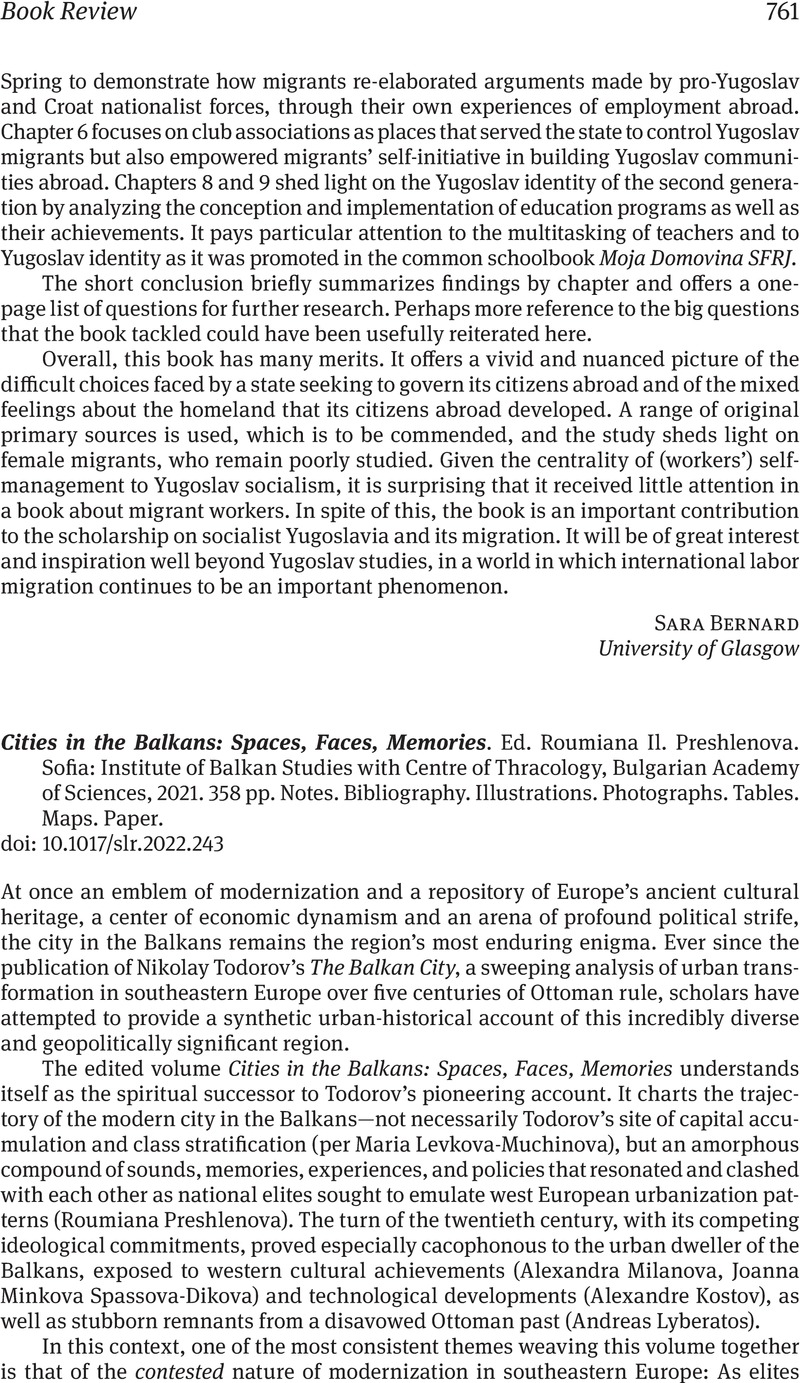No CrossRef data available.
Article contents
Cities in the Balkans: Spaces, Faces, Memories. Ed. Roumiana Il. Preshlenova. Sofia: Institute of Balkan Studies with Centre of Thracology, Bulgarian Academy of Sciences, 2021. 358 pp. Notes. Bibliography. Illustrations. Photographs. Tables. Maps. Paper.
Review products
Cities in the Balkans: Spaces, Faces, Memories. Ed. Roumiana Il. Preshlenova. Sofia: Institute of Balkan Studies with Centre of Thracology, Bulgarian Academy of Sciences, 2021. 358 pp. Notes. Bibliography. Illustrations. Photographs. Tables. Maps. Paper.
Published online by Cambridge University Press: 07 February 2023
Abstract
An abstract is not available for this content so a preview has been provided. Please use the Get access link above for information on how to access this content.

- Type
- Book Review
- Information
- Copyright
- Copyright © The Author(s), 2023. Published by Cambridge University Press on behalf of the Association for Slavic, East European, and Eurasian Studies


